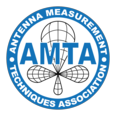P S P Wei, October 2019
An extended long object usually gives rise to a bright reflection (a glint) when viewed near its surface normal. To take advantage of this phenomenon and as a new concept, a discrete Fourier transform (DFT) on the RCS measurements, taken within a small angular range of broadside, would yield a spectrum of incident wave distribution along that object; provided that the scattering is uniform per unit length, such as from a long cylinder [1, 2]. In this report, we examine the DFT spectra obtained from three horizontal long objects of different lengths (each of 60, 20, and 8 feet). Aside from the end effects, the DFT spectra looked similar and promising as an alternative to the conventional field probes by translating a sphere across a horizontal path. Keywords: RCS measurements, compact range, field probes, extended long objects 1. The Boeing 9-77 compact range The Boeing 9-77 indoor compact range was constructed in 1988 based on the largest Harris model 1640. Figure 1 is a schematic view of the chamber, which is of the Cassigranian configuration with dual-reflectors. The relative position of the main reflector and the upper turntable (UTT) are as shown. The inside dimensions of the chamber are 216-ft long, by 80-ft high, and 110-ft wide. For convenience, we define a set of Cartesian coordinates (x: pointing out of the paper, y: pointing up, z: pointing down-range), with the origin at the center of the quiet zone (QZ). The QZ was designed as an ellipsoidal volume of length 50-ft along z, height 28-ft along y, and width 40-ft along x. The back wall is located at z = 75 ft, whereas the center of the roll-edged main reflector (tilted at 25 o from vertical) is at z =-110 ft. It is estimated that the design approach controls the energy by focusing 98% of it inside the QZ for target measurements. The residual field spreading out from the main reflector was attenuated by various absorbers arranged in arrays and covering the chamber walls.-, Tel. (425) 392-0175 2. Anechoic chamber In order to provide a quiet environment for RCS measurements, the inside surfaces of an anechoic chamber are typically shielded by various pyramidal and wedged-shaped absorbers, which afford good attenuation at near-normal incidence for frequencies higher than ~2 GHz. At low frequencies and oblique angles [3], however, Figure 1. A schematic view of the Boeing 9-77 compact range with dimensions as noted. insufficient attenuation of the radar waves by the absorbers may give rise to appreciable backgrounds. Figure 2 shows a panorama view inside the compact range, as viewed from the lower rear toward the main reflector and the UTT. With the exception of the UTT, all other absorbers are non-moving or stationary. A ring of lights on the floor shows the rim around the lower turntable (LTT), prior to the installation of absorbers. In order to minimize the target-wall interactions, the surfaces facing the QZ from the ceiling, floor, and two sidewalls are covered with the Rantec EHP-26 type of special pyramidal absorbers.
